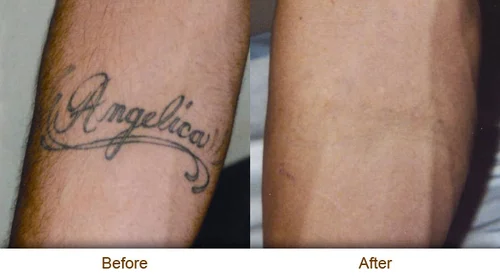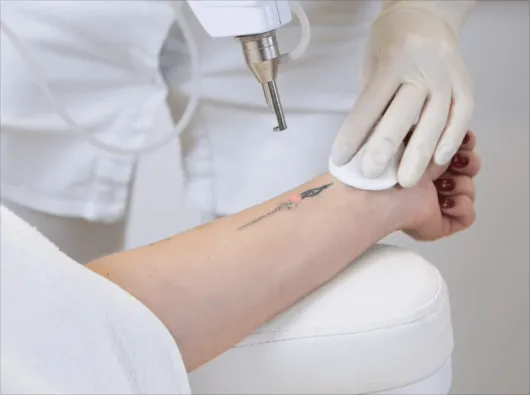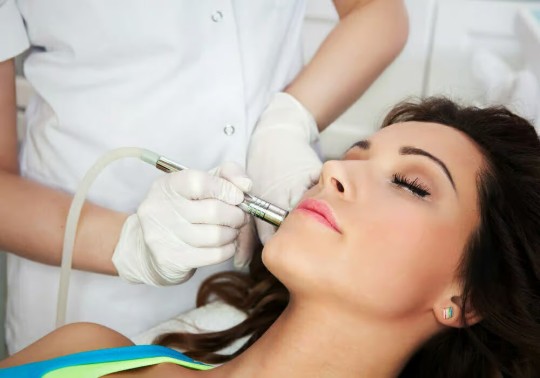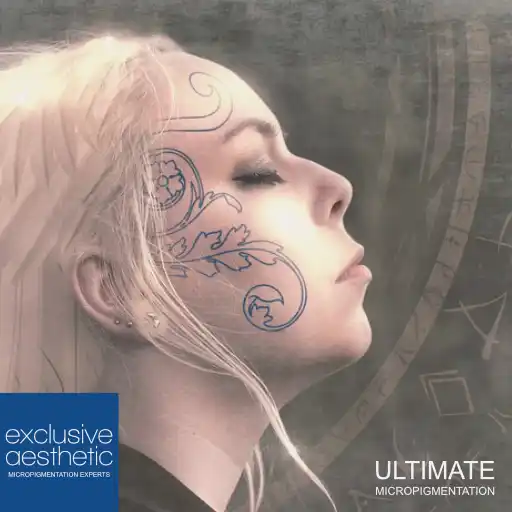#TattooRemoval
Explore tagged Tumblr posts
Text
Effective Tattoo Removal in Oakland, CA
Looking for tattoo removal in Oakland, CA? Our clinic offers safe and efficient solutions tailored to your skin type. Enjoy expert care with advanced techniques that deliver visible results. Reclaim your skin and confidence—schedule your appointment for tattoo removal today!
2 notes
·
View notes
Text
Tattoos are no longer considered taboo. Tattoos are no longer a barrier to many careers, and they're not viewed as a social issue. Rasmussen Reports estimates that by 2022, nearly 50% of Americans under 40 will have at least one ink tattoo. Although this may indicate social progress, it creates the reality that more people will face a particular ...
2 notes
·
View notes
Text
Stuck with Tattoo Regret?
Say goodbye to unwanted ink with safe and effective laser tattoo removal.
Our advanced technology ensures precise removal with minimal discomfort, helping you achieve clear, beautiful skin. Laser Tattoo Removal Treatment
Dr. Kiruthika (Dermatologist)
📍 Sanjay Rithik Hospital 77A, Sengunthapuram Main Road, Karur 639002. 🌐 Website: www.sanjayrithikhospital.com 📱 Mobile: +91 89030 09723, +91 75983 23022
#HairLoss#SkinRenewal#babycare#cosmetology#Skin#treatment#lasertreatment#childcare#skintightening#Karur#brighterskin#sanjayRithik#cosmetologist#skincare#skincareroutine#skincaretips#tattooremoval#lasertattooremoval#lasertattooremovalspecialist
0 notes
Text
Say Goodbye to Unwanted Ink with PicoSure Pro Laser Tattoo Removal

Tattoos often hold special meaning, but they can also be a source of regret. Whether you’re dealing with a faded design, a change in personal style, or simply wish to erase the past, PicoSure Pro Laser Tattoo Removal offers a safe and effective solution. At BodyWise Specialists in Indialantic, FL, we provide state-of-the-art laser technology that removes unwanted ink with minimal discomfort and faster results.
Why Choose PicoSure Pro for Tattoo Removal?
Unlike traditional laser treatments, PicoSure Pro Laser Tattoo Removal uses advanced picosecond laser technology to break down ink into tiny particles that your body naturally eliminates. This cutting-edge method ensures clearer skin with fewer sessions and significantly reduces the risk of scarring.
Key Benefits of PicoSure Pro:
Effective on All Ink Colors – Targets stubborn hues like green, blue, and black.
Safe for All Skin Types – Works on light and dark skin tones with minimal side effects.
Faster Results – Fewer sessions compared to traditional tattoo removal methods.
Minimal Discomfort – Uses non-thermal energy to reduce heat damage.
Little to No Downtime – Resume your daily routine almost immediately.
How Does PicoSure Pro Work?
This advanced laser technology delivers ultra-short bursts of energy that shatter ink particles without harming surrounding skin. These broken-down particles are then flushed out by your body’s lymphatic system, gradually fading the tattoo. Most patients notice visible improvement after just one or two sessions.
What to Expect During Your Tattoo Removal Journey
Personalized Consultation – Every tattoo is unique, so we assess size, color, and ink depth to create a tailored treatment plan.
Laser Treatment Sessions – The PicoSure Pro Laser Tattoo Removal device targets ink while preserving your skin’s health.
Post-Treatment Care – Simple aftercare steps help optimize results and promote smooth healing.
Frequently Asked Questions
How many sessions will I need? Most tattoos require between 4 to 8 sessions, depending on size, color, and age. Sessions are spaced 6 to 8 weeks apart for optimal fading.
Does it work on all tattoo colors? Yes! PicoSure Pro Laser Tattoo Removal is highly effective on black, red, blue, green, and multicolored designs.
Is the treatment painful? The sensation is similar to a rubber band snapping against the skin, but discomfort is minimal compared to traditional lasers.
Will there be scarring? PicoSure Pro minimizes the risk of scarring thanks to its pressure wave technology, which avoids excessive heat exposure.
Can it remove parts of a tattoo? Yes! Whether you want to fade a section for a cover-up or erase a specific detail, PicoSure Pro Laser Tattoo Removal allows precise targeting.
Is it safe for darker skin tones? Absolutely. This technology is designed to work safely on all skin tones, reducing risks of hyperpigmentation or scarring.
Ready to Remove Your Tattoo?
At BodyWise Specialists, we specialize in advanced tattoo removal treatments that prioritize safety, comfort, and results. If you're considering PicoSure Pro Laser Tattoo Removal, schedule a consultation today and take the first step toward clear skin.
#TattooRemoval#PicoSurePro#LaserTattooRemoval#SkinCare#TattooRegret#IndialanticFL#BodyWiseSpecialists#ClearSkin#BeautyTech#SkinHealth#TattooFading#NonInvasiveTreatment#AdvancedLaserTech#InkFree
0 notes
Text
Say Goodbye to Unwanted Ink with Laser Tattoo Removal

Got a tattoo you no longer love? No worries — advanced Q-Switched Nd:YAG laser technology makes tattoo removal safer and more effective than ever.
🔸 Complete Pigment Removal: This state-of-the-art laser treatment targets and breaks down tattoo pigments, fading even stubborn colors over time. 🔸 Minimal Discomfort: A few painless sessions are typically enough to completely remove unwanted tattoos, with minimal impact on the surrounding skin. 🔸 Safe & Effective: The latest laser technology ensures precise results, reducing the risk of scarring or skin damage.
If you’re ready for a fresh start, explore tattoo removal in Trivandrum with trusted experts!
#TattooRemoval#LaserTreatment#SkinCare#TattooFree#LaserTattooRemoval#BeautyClinic#SkinHealth#QSwitchedLaser#TrivandrumSkincare#LaserSkinCare
0 notes
Text
Experience Smooth Skin with Laser Hair & Tattoo Removal at LIV Healthy Med Spa

Are you tired of shaving, waxing, or living with tattoos you no longer love? At LIV Healthy Med Spa, we offer state-of-the-art Laser Hair & Tattoo Removal services designed to give you smooth, clear skin without the hassle. Using advanced technology and expert care, we provide effective, safe, and comfortable treatments that can help you say goodbye to unwanted hair and tattoos for good.
Why Choose Laser Hair Removal?
Unwanted hair can be a constant source of frustration. Traditional methods like shaving or waxing offer only temporary relief, often resulting in irritation, bumps, or ingrown hairs. Laser Hair & Tattoo Removal at LIV Healthy Med Spa offers a permanent solution that is safe for all skin types.
Our cutting-edge laser technology targets the hair follicles, permanently reducing hair growth and providing smooth skin that lasts. Whether you’re seeking hair removal for the face, underarms, legs, or other areas, our laser treatments are designed to be quick and effective. Unlike waxing or shaving, you won’t have to worry about frequent touch-ups, and the results will keep you feeling confident in your skin.
With Laser Hair & Tattoo Removal, you can enjoy smoother skin with minimal discomfort and no downtime. Most clients find the process comfortable, with results that continue to improve after each session.
Laser Tattoo Removal: Safe and Effective
Whether your tattoo no longer fits your style, or you’ve outgrown it, our Laser Hair & Tattoo Removal treatments offer a way to safely and effectively remove unwanted tattoos. At LIV Healthy Med Spa, we use advanced laser technology that targets the ink particles in your skin, breaking them down so your body can naturally eliminate them.
Tattoo removal can take several sessions depending on the size, color, and depth of the tattoo. However, you can rest assured that our skilled professionals will work with you to ensure the most efficient treatment, tailored to your specific tattoo. With each session, you’ll notice the tattoo fading away, leaving your skin clear and rejuvenated. Our Laser Hair & Tattoo Removal treatments offer minimal discomfort, so you can trust that the process is as smooth as possible.
Benefits of Choosing LIV Healthy Med Spa
At LIV Healthy Med Spa, we are committed to delivering exceptional care and results for our clients. Our Laser Hair & Tattoo Removal treatments are performed by skilled professionals who use the latest technology to ensure you receive the best care possible. We prioritize your comfort, safety, and satisfaction, tailoring each treatment to your needs.
We offer a variety of services to help you look and feel your best. Whether you’re seeking hair removal or tattoo removal, we have the expertise and technology to help you achieve your goals. Our treatments are quick, effective, and virtually painless, so you can enjoy smooth, clear skin without the hassle.
What to Expect During Your Treatment
Before starting any Laser Hair & Tattoo Removal treatment, we’ll conduct a thorough consultation to ensure you are a good candidate for the procedure. For hair removal, we’ll discuss the areas you’d like to treat, and for tattoo removal, we’ll evaluate your tattoo’s size, location, and color.
Both treatments are non-invasive and require no downtime, so you can return to your daily routine immediately after your appointment. For hair removal, you may experience some redness or swelling, which will subside within a few hours. After tattoo removal, some clients may experience slight discomfort or swelling, but this is temporary and part of the healing process.
It’s important to follow the aftercare instructions provided by our professionals to ensure the best results. In most cases, multiple sessions are required for both hair and tattoo removal, but with each session, you’ll see noticeable improvements.
Why Laser Treatments are the Best Option
Laser treatments for hair and tattoo removal have quickly become the gold standard for those seeking long-lasting, effective solutions. Here’s why:
Precision: Laser technology targets the exact area where treatment is needed, without damaging the surrounding skin.
Long-lasting results: Unlike traditional methods, lasers offer permanent hair reduction and tattoo fading.
Minimal discomfort: With advanced laser technology, the process is comfortable, and many clients describe it as feeling like a slight pinch.
Suitable for all skin types: Our Laser Hair & Tattoo Removal services are safe and effective for all skin tones.
With laser treatments, you can achieve smooth, tattoo-free skin without the frustration of traditional methods. It’s a time-saving, effective, and comfortable solution for those looking to make a permanent change.
Book Your Consultation Today
At LIV Healthy Med Spa, we’re here to help you achieve your skin goals. Whether you’re looking for permanent hair removal or tattoo fading, our Laser Hair & Tattoo Removal services can help you achieve smooth, clear skin. Book your consultation today, and take the first step toward a more confident, beautiful you.
#LaserHairRemoval#TattooRemoval#SmoothSkin#LaserTreatment#TattooFading#HairFreeSkin#BeautyCare#SkinCareSolutions#LIVHealthyMedSpa#LaserBeauty#PermanentHairRemoval#ClearSkin#BeautyClinic
0 notes
Text
What are the risks of Laser Tattoo Removal in Edinburgh?

Image Source - estemedicalgroup.uk
Laser tattoo removal is generally safe when performed by a qualified professional, but like any procedure, it does come with potential risks.
Here are Some Possible Risks & How To Solve
1. Skin Irritation and Redness
After treatment, the skin may appear red, swollen, or sensitive. This is a common reaction and usually subsides within a few days.
2. Blistering and Scabbing
Blisters or scabs might form as the skin heals. Avoid picking at them to prevent scarring or infection.
3. Hyperpigmentation or Hypopigmentation
The treated area may become darker (hyperpigmentation) or lighter (hypopigmentation) than your natural skin tone. This risk is higher for individuals with darker skin tones.
4. Scarring
While rare, improper care or overly aggressive treatment can lead to scarring. Ensure your provider uses the appropriate laser settings for your skin type.
5. Incomplete Removal
Some tattoos, especially those with certain ink colors (e.g., green or light blue), may not be fully removable, even with multiple sessions.
6. Infection
There’s a small risk of infection if the treated area isn’t properly cleaned or cared for during the healing process.
7. Pain or Discomfort
Laser tattoo removal can be uncomfortable, often described as similar to the sensation of being snapped with a rubber band. Topical anesthetics may be used to minimize discomfort.
Tips to Minimize Risks
Choose a Reputable Clinic: Look for licensed and experienced practitioners in Edinburgh. Read reviews and ask about the technology they use (e.g., Q-switched or Pico lasers).
Follow Aftercare Instructions: Keep the area clean, avoid sun exposure, and use recommended creams to aid healing.
Consult a Specialist: Schedule a consultation to discuss your skin type, tattoo details, and expected results.
By taking these precautions, you can greatly reduce the risks and achieve safe, effective tattoo removal. If you’re in Edinburgh, there are several reputable clinics offering laser tattoo removal be sure to research and choose the right one for your needs.
#LaserTattooRemoval#TattooRemoval#TattooRemovalEdinburgh#TattooRemovalRisks#EdinburghTattooRemoval#SkinCare#TattooRemovalJourney#LaserTreatment#TattooRemovalProcess#TattooRemovalSafety#LaserTherapy#InkRemoval#TattooRisks#TattooRegret#SkinHealing#TattooRemovalAftercare#TattooLaserTreatment#TattooRegretFix#EdinburghSkincare#ScarringRisk#TattooFree
1 note
·
View note
Text

No, we do not hunt down 80s and 90s Tribal tattoos and eliminate them. We love tattoos and want the best for you…even if you want them all gone. No judgement, just results.
0 notes
Text
Achieve Flawless Skin with Pico Laser Technology

In the culture of the beautiful skin it is crucial these days to have clear skin so that no imperfections can diminish our self-esteem. If you find yourself surrounded by acne scars, sun damage, or even an unwanted tattoo, the Pico laser technology is a perfect answer. As the name implies, this unique treatment comes in some ways as a shortcut to rapid intervention on issues such as discoloration, scarring and other skin imperfections as it provides the glowing skin texture you desire without much waiting time. In the Pico laser treatment process, ultra-short pulses of energy are used to break up pigmentation without affecting the skin negatively. This means, you can use fewer sessions and achieve a beautiful skin of a young woman without any unpleasant feelings.
Read more: Pico laser
0 notes
Text
How Rejuvi Tattoo Removal Compares to Laser Tattoo Removal

How Rejuvi Tattoo Removal Compares to Laser Tattoo Removal. Laser tattoo removal was the go-to, but Rejuvi tattoo removal is becoming popular. https://exclusiveaesthetic.uk/how-rejuvi-tattoo-removal-compares-to-laser-tattoo-removal/
0 notes
Text
Laser Hair & Tattoo Removal: The Perfect Solution for Clear, Smooth Skin

If you're looking to achieve long-lasting smooth skin or remove unwanted tattoos, LIV Healthy Med Spa offers the perfect solution with our Laser Hair & Tattoo Removal services. Our state-of-the-art laser technology ensures that your treatments are effective, safe, and tailored to your skin type for the best possible results.
Permanent Hair Reduction: Our laser hair removal treatment targets the pigment in hair follicles, effectively reducing hair growth for long-term smoothness. Say goodbye to the hassle of shaving, waxing, and plucking!
Efficient Tattoo Removal: Whether you have a small design or a full sleeve, our laser tattoo removal service helps fade or completely remove unwanted tattoos. The procedure is fast, minimally discomforting, and results in clear skin without the need for harsh chemicals.
At LIV Healthy Med Spa, we prioritize safety and effectiveness, using the latest technology to achieve results. Our skilled professionals are here to guide you every step of the way, ensuring a comfortable experience and high-quality care.
Visit: Laser Hair & Tattoo Removal
#LaserHairRemoval#TattooRemoval#SmoothSkin#HairFree#TattooFree#Beauty#Skincare#MedSpa#LaserTreatments#LIVHealthyMedSpa#SmoothAndClear#BeautyCare
0 notes
Text

Say goodbye to unwanted tattoos with BodyClinix's Tattoo Removal Treatment! Our safe and effective laser technology removes tattoos of all sizes and colors, leaving your skin smooth and clear.
📍 E 7/11, Basement, Malviya Nagar, New Delhi-17 📞 Call: 011-47701163 | 📱 WhatsApp: +91 7303335036 | +91 7055305030
0 notes
Text
How Many Sessions Are Needed for Tattoo Removal?

Images Source - wowcher The number of sessions required to remove a tattoo depends on several factors, including the tattoo's size, color, location, the type of ink used, and your skin type. On average, it takes 6 to 12 sessions for complete removal, with sessions spaced about 6 to 8 weeks apart.
Here's a detailed breakdown of the factors influencing the number of sessions
1. Tattoo Size
Small tattoos may require fewer sessions, typically 4–6.
Larger tattoos or ones with intricate designs can take upwards of 10–12 sessions.
2. Tattoo Colors
Black and dark-colored inks are the easiest to remove because they absorb laser light more effectively.
Bright colors like red, green, and yellow are more challenging and may require additional sessions or specialized laser wavelengths.
3. Ink Quality and Depth
Professional tattoos often use higher-quality inks that penetrate deeper into the skin, requiring more sessions for complete removal.
Amateur tattoos may have uneven ink placement, which can sometimes make removal easier.
4. Location on the Body
Tattoos on areas with good blood circulation, like the arms or chest, respond better to laser treatment.
Tattoos on areas like the ankles or feet might take longer due to slower ink breakdown in regions with less circulation.
5. Skin Type
People with lighter skin tones tend to experience faster results as the laser can target the ink without interfering with melanin.
Darker skin tones may require more sessions with adjusted laser settings to avoid skin damage.
6. Type of Laser Used
Modern lasers like Q-switched lasers or PicoSure are highly effective and may reduce the total number of sessions. Discuss the laser technology with your technician to set realistic expectations.
7. Time Between Sessions
Sessions are spaced 6 to 8 weeks apart to allow the skin to heal and for the body to break down ink particles. Attempting to shorten this timeline can lead to skin irritation or scarring.
Other Considerations
Complete removal is not always guaranteed, especially for certain colors or older tattoos. Some individuals may require touch-ups or additional treatments for complete fading.
Conclusion
On average, 6 to 12 sessions are required for effective tattoo removal. However, every tattoo is unique, and the exact number of sessions can vary. Consultation with a licensed tattoo removal specialist is crucial to get an accurate estimate based on your specific tattoo and skin type.
#TattooRemoval#LaserTattooRemoval#TattooRemovalJourney#ClearSkinGoals#TattooFading#TattooRemovalSessions#TattooFreeSkin#SkinRestoration#TattooRemovalExpert#TattooRegret#LaserTreatment#InkRemoval#TattooRemovalTips#SkinCareAfterTattoo#GoodbyeInk#TattooGone#LaserTherapy#TattooCorrection#TattooRemovalProcess#InkFreeFuture
0 notes
Text
Goodbye, old ink.. After years of regretting my tattoo, I finally took the plunge. The process was quick, and I’m beyond happy with the outcome! Thank you for your incredible service!” 🌟 #FreshStart #TattooRemovalSuccess
👉Why Choose Haror’s Wellness: ✔️ Holistic Approach ✔️ Targeted Treatments ✔️ Over 15 Years of Expertise ✔️ Trusted by 100,000+ Satisfied Clients ✔️ Premium Care, Affordable Treatments ✔️ Advanced Treatments with State-of-the-Art Technology
Call 📞 +91 96378 66666 to schedule your appointment
https://drharorswellness.com/book-appointment/
#tattoo#tattooremoval#tattooremovalspecialist#tattooremovalbeforeandafter#tattooremovallaser#tattooremovaltreatment#drharorswellness#drnavnitharor#dermatologist#skincare#skincaredoctor#skincarespecialist
0 notes
Text
Top-Rated Tattoo Removal Specialists in Oakland, CA
Trust your tattoo removal to the top-rated specialists in Oakland, CA. Utilizing advanced laser technology, we ensure optimal results while minimizing discomfort and downtime. Our experienced team is dedicated to providing personalized care, guiding you through every step of the tattoo removal process.
1 note
·
View note
Text

Bioinus Healthcare is the leading tattoo removal clinic in Siliguri, offering safe and effective solutions for unwanted tattoos. Our experienced team utilizes advanced laser technology to remove tattoos with minimal discomfort and excellent results. Whether you're looking to fade an old tattoo or completely remove it, our personalized treatment plans ensure the best outcome for your skin. Trust Bioinus Healthcare for professional and reliable tattoo removal services that help you achieve clear, tattoo-free skin.
#tattooremoval#lasertattooremoval#skinhealth#siliguri#tattoofade#clearskin#tattooclinic#skincare#personalizedtreatment
0 notes